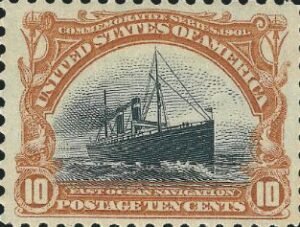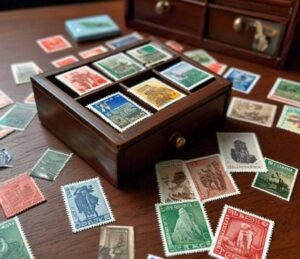Stamp collecting has long been a cherished hobby for millions of people worldwide, sparking passion, nostalgia, and curiosity about history. However, with the rise of digital communication and other modern pastimes, many wonder: Is stamp collecting still popular? This question has become more pertinent in recent years as technology continues to reshape how we communicate and collect things. In this article, we will explore both the thriving aspects of stamp collecting and its gradual decline, addressing the factors that impact its popularity today.

The Rise of Stamp Collecting and Its Early Popularity
Stamp collecting, also known as philately, began to gain traction in the 19th century. The first postage stamps were issued in 1840 in the United Kingdom, and the hobby quickly spread across the globe. Early stamp collectors found joy in studying different stamps, learning about different countries, and preserving pieces of history. At the time, stamp collecting was extremely popular, and it became a way for individuals to connect with other cultures and people from around the world.
For many decades, stamp collecting was considered a pastime for all ages. Children and adults alike enjoyed the thrill of acquiring new stamps, and the hobby was supported by stamp shops, trade shows, and local philatelic clubs. The popularity of stamp collecting peaked in the mid-20th century, when it was viewed as both an educational and a rewarding activity. However, as society evolved, the question arose: Is stamp collecting still popular?
Digital Age: The Decline in Stamp Collecting’s Popularity
With the advent of email, instant messaging, and social media, the role of traditional mail and postage stamps has diminished significantly. Is stamp collecting still popular in a world where communication is fast, digital, and often free? The decline of postal services in favor of digital alternatives has certainly affected the hobby. As fewer people use stamps for sending letters, there is less opportunity for new collectors to engage with the hobby.
Moreover, the internet has made it easier for collectors to buy, sell, and trade stamps, but it has also led to a shift in interest. Many younger people are more focused on digital collectibles, such as cryptocurrencies or NFTs, than on physical items like stamps. This has created a generational divide, and stamp collecting is no longer as popular as it once was, especially among younger generations.

The Resurgence of Interest: Why Stamp Collecting Is Still Thriving
Despite the challenges posed by technology, stamp collecting is still popular among certain groups, especially older generations and those who have inherited collections from family members. For these individuals, stamp collecting is not just about the stamps themselves but about preserving history and enjoying a timeless hobby that connects them with the past. Many collectors find joy in the detailed designs, the stories behind each stamp, and the satisfaction of completing a set or discovering a rare find.
The hobby is also thriving in niche communities, where collectors can share their passion for stamps online or attend stamp shows. Online platforms like eBay and specialized philatelic websites have allowed stamp enthusiasts to connect and trade stamps in ways that were never before possible. While stamp collecting may not be as popular as it was in the past, it remains a beloved hobby for those who appreciate its cultural and historical significance.
The Investment Potential of Stamp Collecting
One reason why is stamp collecting still popular is the potential for stamps to be valuable investments. Rare stamps, such as the Inverted Jenny or the Penny Black, have fetched millions of dollars at auction, attracting collectors and investors alike. The idea that certain stamps could appreciate has kept the interest in philately alive. For many collectors, the financial aspect of is stamp collecting still popular and offers both excitement and the possibility of a future return on investment.
While not every stamp will become a valuable asset, the possibility of discovering a hidden gem is still a major draw for collectors. The investment potential of stamps continues to contribute to the hobby’s appeal, and is stamp collecting still popular among those who view it as a blend of passion and investment. In this sense, is stamp collecting still popular because it combines both enjoyment and the potential for financial reward.

The Social and Educational Aspects of Stamp Collecting
In addition to being a potentially profitable activity, stamp collecting remains popular because it fosters social connections and learning. Many stamp collectors belong to clubs and attend conventions where they can meet like-minded individuals, exchange stamps, and learn more about the hobby. These communities provide a social outlet for people who enjoy discussing their shared interests and exchanging knowledge about stamps and philatelic history.
Educationally, stamp collecting is a great way for young people to learn about geography, history, and art. Some schools and educational organizations use stamps as teaching tools to help children better understand the world. The visual and historical nature of stamps makes them an ideal subject for teaching, and this educational value is one of the reasons why stamp collecting remains popular among certain groups, especially educators and parents.
Challenges Facing Stamp Collecting’s Popularity
Despite the niche following, stamp collecting is no longer as popular as it once was. Several factors contribute to this decline, including the reduced use of physical mail, the rise of digital communication, and a lack of widespread interest among younger generations. Additionally, stamp prices have fluctuated, and not all stamps are guaranteed to appreciate in value, making the investment aspect less appealing for some.
The lack of new collectors entering the hobby, combined with the natural attrition of older collectors, is a growing concern for the future of stamp collecting. Without a younger audience to sustain interest in the hobby, the question of whether stamp collecting is still popular becomes more pressing with each passing year.

Conclusion: Is Stamp Collecting Still Popular?
So, is stamp collecting still popular? The answer is complex. While the hobby has seen a decline in mainstream popularity, it is by no means extinct. For many collectors, the joy of stamp collecting remains as strong as ever, driven by historical interest, social connections, and the potential for rare finds. Though stamp collecting may not be as popular as it once was, it continues to thrive in niche communities, supported by a dedicated base of enthusiasts and investors.
Ultimately, the future of stamp collecting depends on how the hobby adapts to modern times. Whether through digital platforms or a renewed interest in the cultural and historical value of stamps, philately may continue to evolve, ensuring that stamp collecting remains popular for years to come.




